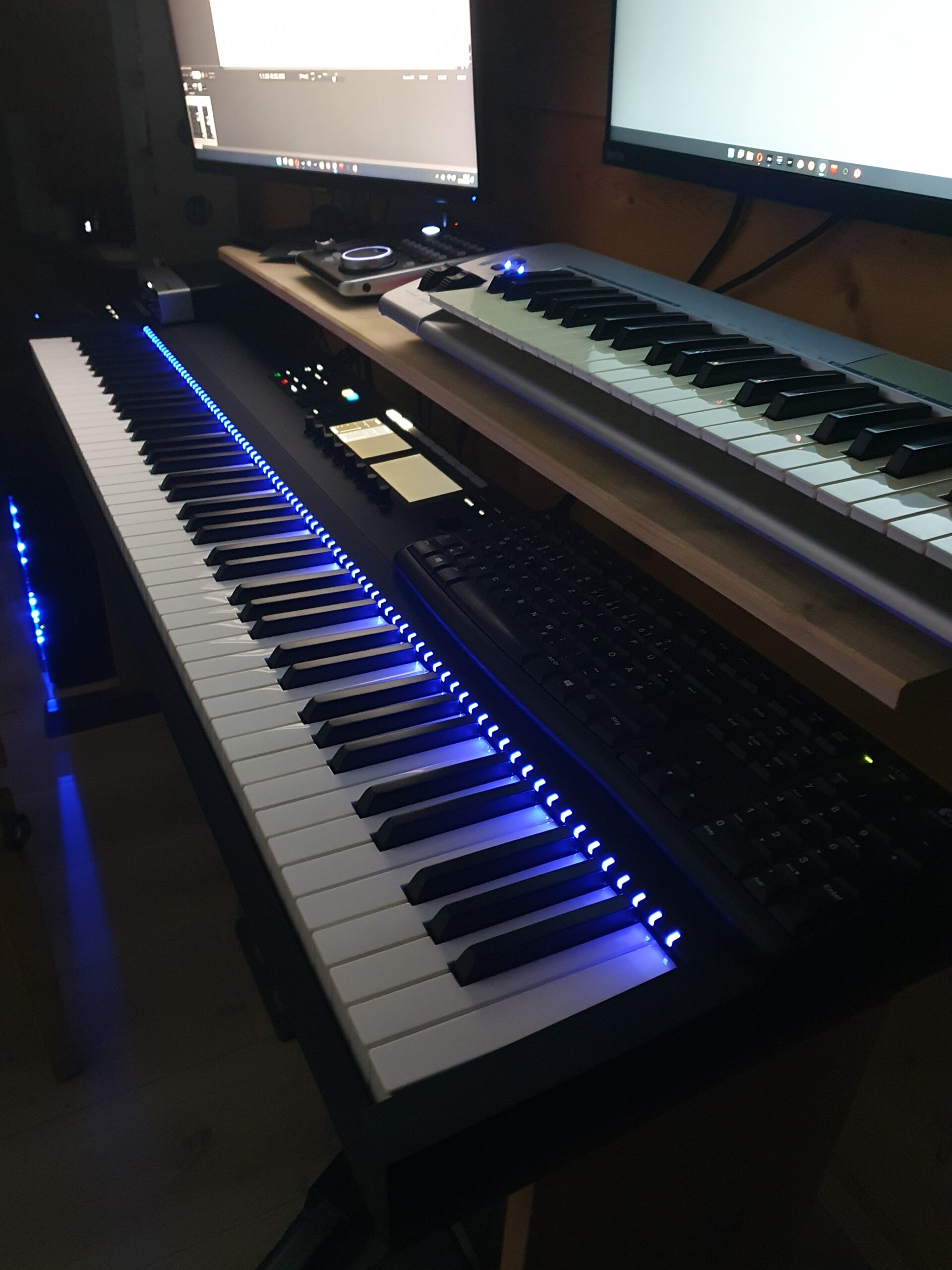
Hardware*:
Keyboard: Native Instruments Kontrol S88
I decided in favour of the Native Instruments Komplete Kontroll S88 as an essential part of my “studio”. The reason for choosing this instrument is that it has a very high-quality and weighted keyboard from Fatar, which has the full range of 88 keys. The deep integration into the Natice Instuments software really helps to complete complex tasks quickly and intuitively.
Speakers: Edirol MA – 15 D
The speakers (near-field monitors 😉 ) are from Edirol (Roland Group) and have, to my taste, a very balanced sound. This is very important, of course, because otherwise glaring mistakes happen when mixing the sound. It is also very pleasant that you can connect headphones directly. Depending on the impedance of the headphones, this is helpful, as is the tone control. For my mini-studio, they are absolutely sufficient in terms of performance. And by the way, they also look pretty 🙂
Sound module: Steinberg UK 22 MK II
The biggest enemy of recording is called “latency”. This is the time that elapses between pressing a key on the instrument and playing back the sound. Particularly older or weaker sound cards in PCs cannot be used for this because of the amount of data. So the sound module is more or less an external sound card (which, however, can do a bit more). The UR 22 also has a MIDI port so that other Midi-compatible devices can be connected to the computer. In addition, there are two adjustable Neutrik (combination of 6.3 mm and XLR) inputs for instruments or microphones. My experience with the UR 22 has been very positive and the workmanship is top notch.
Computer: self-built, i7 3.4 GHz 32 GB RAM, 4 TB SSD, Windows 11
The computer was configured so that only the DAW software and the plug-ins are installed on it. Nice and fast and stable.
Software*:
DAW software: REAPER
The software heart is the DAW (Digital Audio Workstation), i.e. the programme used to record, cut and edit. I decided to use REAPER because it is really affordable and in no way inferior to the “big” DAWs. The other advantage, which is very important to me, is that it requires relatively little computer power and space on the hard drive. Of course, I haven’t understood everything in this programme by far yet, but I’m on the right track.
VST Plugins*:
The VST plug-ins are the digital instruments and sounds (MIDI) and are integrated into the tracks of the DAW. The recording is usually done using the keyboard.
There is a hardly manageable amount of VSTs. It depends very much on what you want to do and in which direction you are moving musically.
Here is an (incomplete) list of my plug-ins:
Native Instruments Komplete
Indiginus
BBC Orchestra
VSL (Vienna Synfonic Library)
Sonic Score
Project Sam
Miroslav Philarmonic 2
Conclusion:
All in all, small but nice. The components are well coordinated and so composing and working is a lot of fun and is not too dominated by technology.
*) All company, product and brand names mentioned are the property of their respective owners and are usually protected by trademark, utility model or patent.